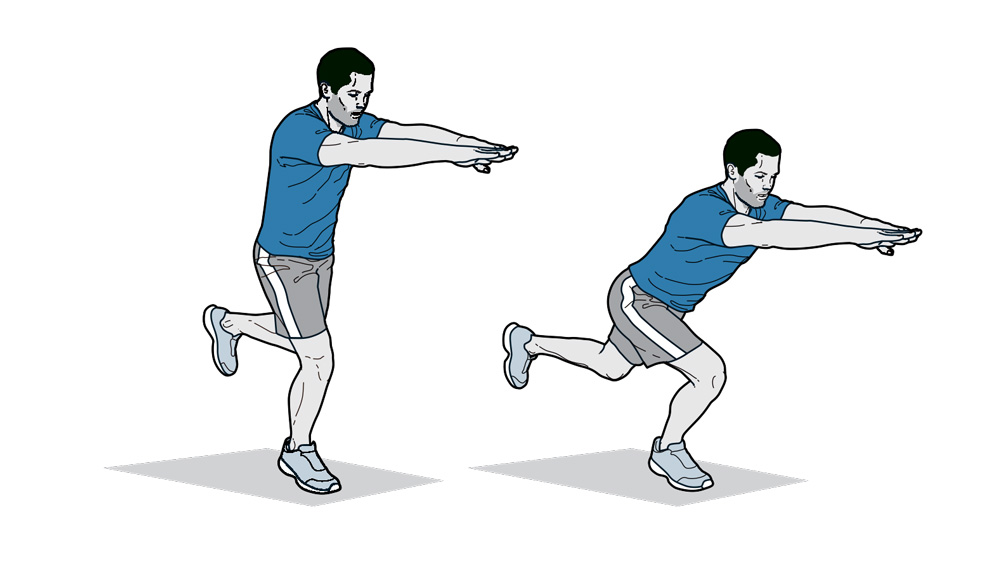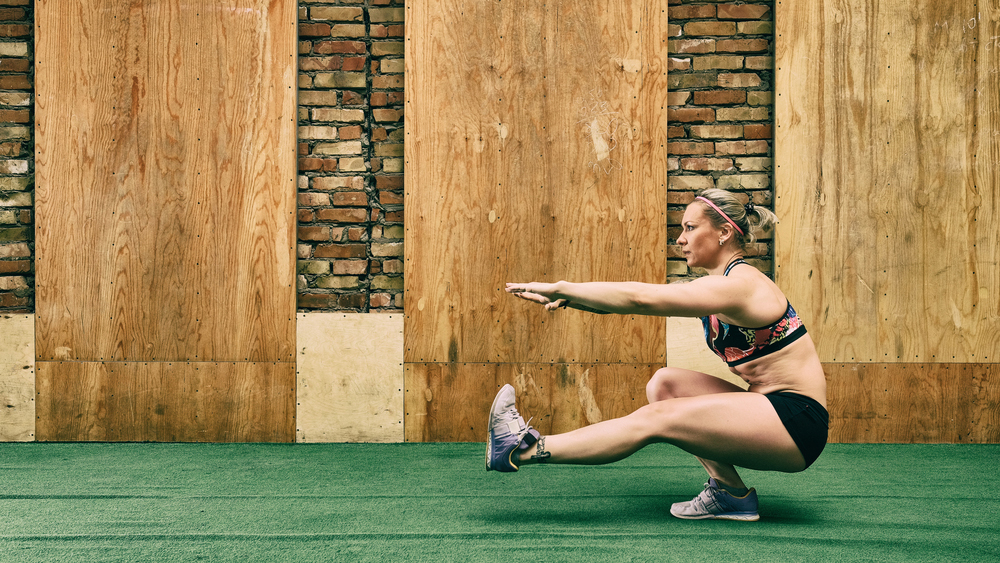How To Master The Single-Leg Squat
Enhance the benefits of your squats by halving the number of legs involved

The squat is one of the finest exercises on the planet. It stimulates all the major muscles in the legs – the quads, hamstrings and glutes. Once you’ve mastered squatting with both legs (no easy feat), the split squat and the Bulgarian split squat, then the single-leg squat is a way to progress even further.
Adopting a single-leg stance can spark new muscle growth in the targeted leg, in addition to aiding your mobility, co-ordination and core stability. It also helps program your body to keep a straight back (neutral spine to those in the know), which will carry great benefits into other exercises.
Working on one leg is also something that all sportspeople should include in their cross-training. Whether you’re a runner, footballer, hiker or lacrosse player, the chances are you spend more time on one leg than two – unless you’re a particularly lazy player or like to bunny-hop your way around the pitch. The single-leg squat is a particularly good one-leg exercise for athletes, because you mimic the movement of running while strengthening your leg muscles, making you faster and more resistant to injuries.
How To Do A Single-Leg Squat
Stand on one foot with your other leg bent at the knee. You can extend the raised leg straight out in front of you and do a pistol squat, which is a common (and very difficult) type of single-leg squat, but it is simpler to just bend your knee to raise your leg when you’re first attempting the exercise. You can also make it easier by holding both arms out in front of you during the exercise to aid your balance.
Once you’re balanced on one leg, squat down as low as you can without losing your form (or toppling over). Don’t let your knee go past the front of your toes while you squat. Pause at the bottom of the squat for a second, then push back up through your heel, squeezing your glutes as you go.
Single-Leg Squat Variations
One-leg box squat
If you are finding single-leg squats tough and getting nowhere near ten reps on each leg without stopping, then go back and master the one-leg box squat first. Get a box or a chair – the lower it is, the harder the box squat will be – and stand on one leg facing away from it. Squat down until you are sitting on the box, then push back up.
Single-leg goblet squat
The easiest way to make the single-leg squat harder is to hold some weight while performing it. Grab a kettlebell, dumbbell or sandbell and hold it against your chest in both hands. This will increase the difficulty not only by adding weight but also by making it harder to keep your balance because your arms are close to you rather than extended out in front. You can also use a barbell, but if you do, rest your non-squatting leg on a bench for safety and stability purposes.
Get the Coach Newsletter
Sign up for workout ideas, training advice, reviews of the latest gear and more.
Pistol squat

Once you’ve become accomplished at single-leg squats, you can try to progress to a full pistol squat, which is a hellishly hard test of your strength, balance and mobility. Stand on one leg with the other extended out straight in front of you and drop into a deep squat. At the bottom of the movement the hamstring on your standing leg should be resting on your calf, with your other leg still stretched out ramrod straight, so you look like a pistol. When you first tackle the exercise you can hold a suspension trainer or an anchored resistance band to help you get into the pistol position.

Nick Harris-Fry is a journalist who has been covering health and fitness since 2015. Nick is an avid runner, covering 70-110km a week, which gives him ample opportunity to test a wide range of running shoes and running gear. He is also the chief tester for fitness trackers and running watches, treadmills and exercise bikes, and workout headphones.









